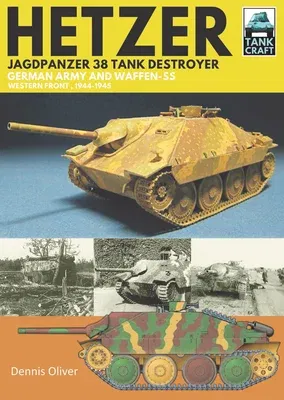By 1944 the German army was on the defensive on all fronts and Allied
bombing was putting increasing pressure on the nation's industrial
output. Since the earliest days of the war the Germans had experimented
with mounting anti-tank weapons on obsolete chassis and one of the most
successful of these would prove to be the Jagdpanzer 38, more often
referred to today as the Hetzer. Small and unimposing the Hetzer's
appearance belied its effectiveness. Armed with the powerful 7.5cm L/48
gun, the same weapon fitted to the Jadgpanzer IV, the Hetzer featured
armour sloped armour plates of up to 60mm thickness and was capable of a
top speed of 42 kilometres per hour. Almost 3,000 examples were
assembled and its low cost and ease of production meant that it was
Germany's most important tank killer of the late war period. In his
latest book in the TankCraft series Dennis Oliver uses archive photos
and extensively researched color illustrations to examine the Hetzer
tank destroyers and the units of the German Army and Waffen-SS that
operated them during the last months of the Second World war. A key
section of his book displays available model kits and aftermarket
products, complemented by a gallery of beautifully constructed and
painted models in various scales. Technical details as well as
modifications introduced during production and in the field are also
examined providing everything the modeller needs to recreate an accurate
representation of these historic tanks.

